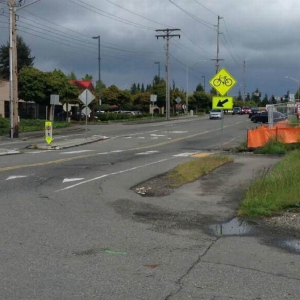As city managers, public works planners, and community leaders, how can you find solutions to fix aging infrastructure within your budgets? Where can you look for creative, ingenious infrastructure designs that are more affordable, community-friendly, and environmentally sensitive? What are the most innovative communities doing to address their infrastructure challenges?
One way to find answers: Discover and leverage the “hidden” assets of your community. Hidden assets are sources of value that are unique to your community, because of your history, geography, economy, structures, people, organizations, and culture. Because they are place-based, hidden assets can provide the foundation for solutions that are tailor-made for your community. How do you find your hidden assets?
HIDING IN PLAIN SIGHT
Sometimes these assets are so familiar that they’re not perceived as such, like the steep forested hills surrounding the City of Cincinnati, Ohio. When this region faced a federal mandate to reduce combined sewer and sanitary sewer overflows, its planners and engineers stretched for creative solutions. They were motivated to minimize impacts on the region’s ratepayers while using infrastructure to stimulate economic development. Eventually, they envisioned Cincinnati’s forested hills as a natural infrastructure system: a network of “bowls” and “sponges” that could capture and infiltrate storm water before it reached the City’s storm water and sewer pipes.
NO WAY IS *THAT* AN ASSET
Other hidden assets are disguised as burdens. Damaged by flooding, the printing press museum in the City of Palouse, Washington, looked like a money sink at first. With no money to restore it, the chamber of commerce could have given up on this historic building. Instead, they made the building’s derelict state a core feature, by transforming the tired building into a haunted house. By flipping the building’s identity, the city also flipped its financial picture: over the last 15 years, the old museum has become a Halloween event for tourists and has raised over $530,000 to support other projects throughout the city.[1]
VISIBLE ONLY TO THE IMAGINATION
Finally, some hidden assets are defined BY what’s not there….yet. To see them, you’ll need imagination.
That was the case for the City of Olympia in a recent value planning effort for a congested urban corridor. During a field trip to the roadway, the group was asked to look for hidden assets. The group noticed that the area lacks sidewalks and pathways that connect neighborhoods to each other, parks, a regional trail, and a retail area. They realized that the hidden assets in this corridor were the many under-utilized opportunities for reaching destinations on foot. As a result, one of the proposed infrastructure solutions was the systematic development of sidewalks and signage to enable foot travel to help relieve congestion.
Quite the opposite of a cookie-cutter approach, hidden assets are a powerful problem-solving tool. As city managers, planners, and community leaders, you can use it to discover your community’s unique opportunities for creating more affordable, innovative, and effective infrastructure solutions. When you think you’ve looked everywhere to solve your challenge, look once again. Uncovering hidden assets may reveal the solutions you need.
What if you’re not an infrastructure decision-maker or planner? Hidden assets will work for you, too. Use them to generate creative solutions to challenges you find in your business, non-profit, or government agency.
Do you know what your hidden assets are and how much value they offer? Get in touch to find out how value planning can help you leverage the hidden treasure in your community.
***
[1] Katauskas, Ted. “New Frontiers”; CityVision Magazine; Sept/Oct 2017. Published by Association of Washington Cities. Page 19.










